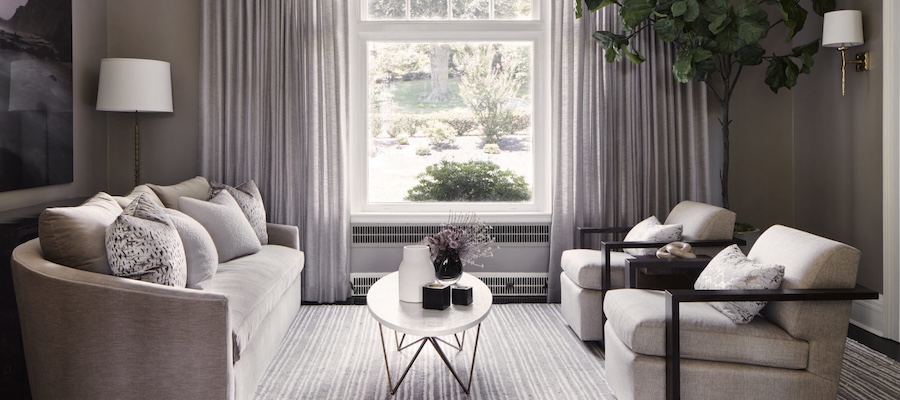Interior design is your calling.
You walk into a room and you just know how to improve it. You have to remind yourself not to blurt out suggestions to those not looking for input (that never goes well!), but design just comes so naturally to you—you want to make the world a more beautiful place.
But, where to start? You need the details on how to start an interior design business, step by step.
I started my interior design business in 2005 and I am thrilled to share what I’ve learned.
It’s time to turn this talent into your own design business.
The dream? It’s your name on the door. You only take on projects that light you up. You change lives by improving the homes of your clients.
You control your own schedule. And, you plan to make great money once you get this business up and running. You were born for this!
Interior design is so much more than most people realize. Interior design is assisting clients in finding their personal style and then expressing that style by shaping their environment.
This can include staging, decorating, renovating, and/or building. There’s all the sourcing and purchasing, as well as overseeing the transformation.
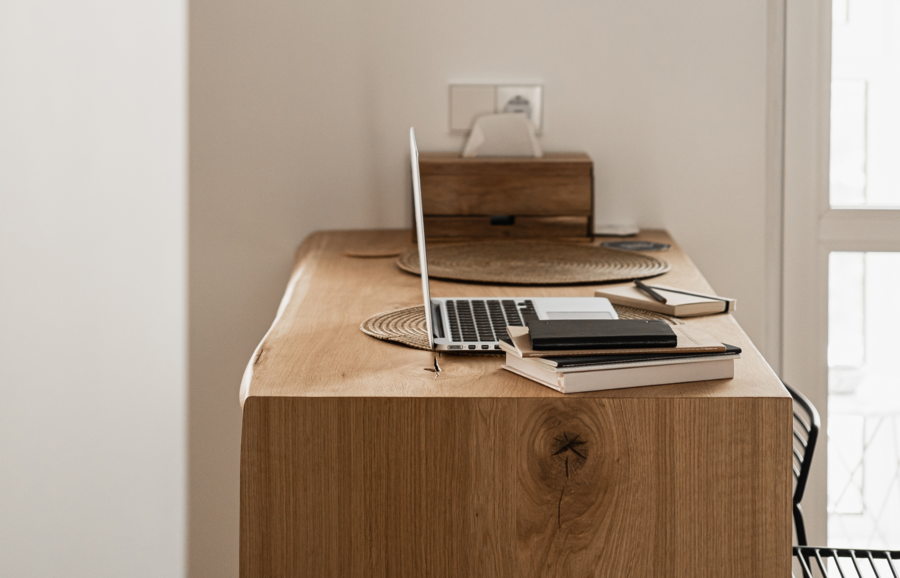
Merriam-Webster defines interior design as, “the art or practice of planning and supervising the design and execution of architectural interiors and their furnishings.” But, I think Coco Chanel said it best, “An interior is the natural projection of the soul.”
We see the soul of our clients and create an environment to reflect, enhance or nourish that soul.
Here’s what we’ll cover on how to start an interior design business:
- Create a Business Plan
- Business Description
- Market Research
- Organizational Structure
- Products and Services
- Marketing
- Financial Plan
- Seeking Investors
- Register Your Business
- Register for Taxes
- Get Business Insurance
- Get Licensing (if necessary)
- Review Employment Guidelines
- Open a Business Bank Account
- Open a Business Credit Card
- Select Design Software
- Open Trade Accounts
Let’s dig in, shall we?
Create a Business Plan
The first step of how to start an interior design business is to create a business plan. This is where most of your big decisions will be made before you take action.
According to SBA.GOV (a great resource for all things small business), “A business plan guides you through each stage of starting and managing your business. You’ll use your business plan as a roadmap for how to structure, run, and grow your business.”
Outline the components of your business at a high level. You want to include what makes your business unique, why it will flourish, your mission, and the business location.
When asking yourself how to start an interior design business, you must start with purpose—the “why”, if you will.
For example, I love to make things the best that they can be… to have them live up to their full potential. I appreciate beauty for beauty’s sake and want to bring more of that to the world. I love helping clients’ spaces reflect their souls.
What’s your “Why”?
Next, determine your business location/address. You will need a physical address for paperwork and for Google to take your business seriously in search results.
However, if your business is located in your home, you may want to get a different business address so you aren’t sharing your home address online.
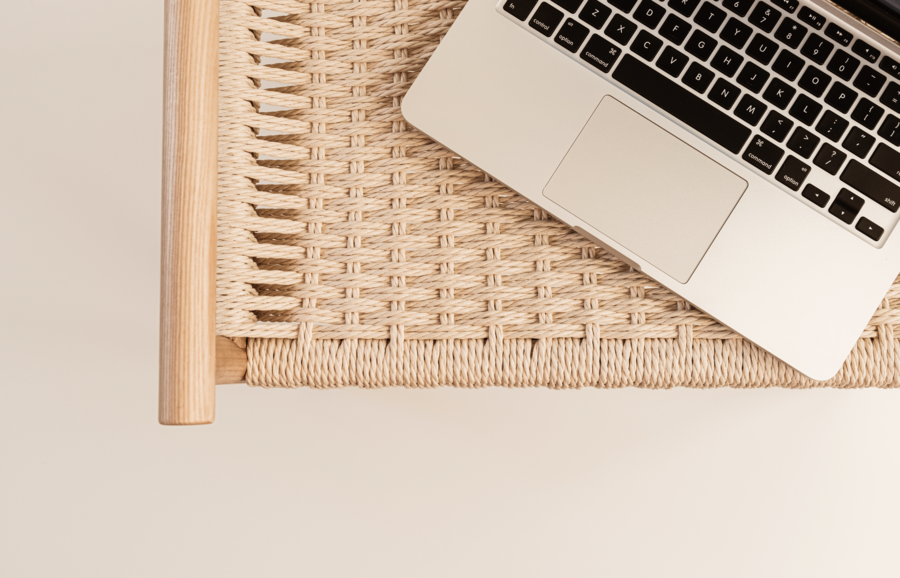
Business Description
Dig deeper into the details of your business. The clients you intend to serve, the problems you solve, the trades and vendors you intend to use to create your vision, and the systems and processes that will allow you to execute excellent interior design.
Market Research
Outline the current landscape of your market. Who are the players in the game? What are they doing well? Where is there room for improvement? What are their areas of focus? And, how will you stand out?
One of the best ways to create a niche is to infuse your personality into your business.
Never go into brand creation trying to please potential clients, but rather highlight what makes you YOU and know that your people will find you. When you bring your whole self to your business, you are automatically unique.
Organizational Structure
Identify how you will structure your company. Will you build out a team from the start or work solo in the beginning? Will you hire a bookkeeper? A company to handle expediting? A web developer? Someone to set up IT?
Your team doesn’t necessarily need to be full of employees, it could be a fierce group of experts and freelancers. Outsource, hire interns for school credit or use freelancers as you are growing. Your pipeline will tell you when you are ready for full-time, in-office employees.
Whatever you decide your team looks like, create an organizational chart to show the structure from the start.
Outline the legal structure of your company; C or S corporation, a partnership, a sole proprietor, or a limited liability company (LLC). Talk with your CPA to determine the structure that suits you best. Don’t have a CPA? Add hiring one to the top of your list.
Products and Services
Outline the services and products that you will offer. Will you procure furnishings for clients? Will you purchase from trade-only vendors (I highly recommend that you do!)? Will you attend markets to meet new vendors?
Do your research and have a plan from the start. I’ve met too many interior designers that jumped into their business without this information and ended up using retail products instead of trade-only products.
They left money on the table, had fewer customization options, and were easily cut out of projects when the client could purchase the same goods with or without them.
Marketing Your Design Business
Outline how you will market your business—how you will attract and retain clients.
First things first, you need to figure out who you will serve. Who is your ideal client? Look at who they are, where they live, and how many children they have (if any).
Are they professionals, young families setting up their first house, empty nesters down-sizing, the 1% working on their 2nd vacation home? Knowing your audience will inform all of your marketing. Do this work before you forge into building your brand.
Once you identify your ideal client, laser focus your marketing to speak directly to them. Your messaging should be speaking clearly to one person (after all, that is how we consume content—alone).
You need to catch their attention (I’ll reiterate, infuse your brand with your personality) and then, solve their problem.
Brand Development is next. You need to be infused into your brand in order to attract your people. Setting branding standards that make your brand recognizable. Voice, colors, fonts, style—all the things that support your ideal client finding you with ease.
Curate a portfolio full of the kind of work you want more of—that means in your ideal aesthetic, scale of rooms, and size of jobs.
We are always improving and refining our portfolios to reflect our growth. Start where you are, but know where you’re headed.
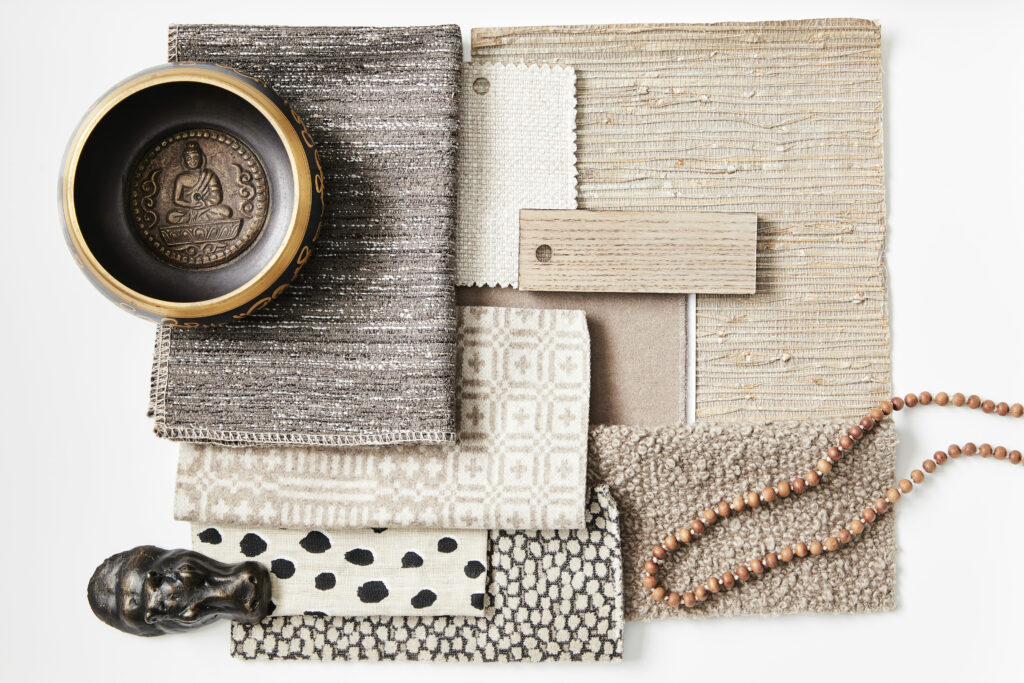
Don’t have a portfolio? Build one. Set up vignettes in your home, a friend’s house, or even a furniture showroom—as long as the work is yours.
Hire a professional photographer to capture your magic. Professional photography is important to building a thriving interior design business. This is one place that DIY just won’t serve you (unless you happen to be a professional photographer—then, lucky you!).
When you are first starting out, look for photography students or even barter design for photo services—it’ll be worth the effort.
Create a website, email list, and social media accounts to showcase all of the above. Start slow with the number of accounts you open. It’s better to be all-in on one or two platforms than to be mediocre on many platforms.
And yes, I said email list. The point of social media is to get potential clients to your website. The point of the website is to have potential clients join your email list (often in exchange for a piece of content called an opt-in).
Once on your list, you will email them consistently to showcase your design expertise and build your “know, like, and trust factor”, as well as stay top of mind. When they realize what their life really needs is a well-appointed home, you’ll be their first call.
Remember—you are the face of your business. This means you need to show your face in your marketing. Clients want to connect with you. They need to get a sense of who you are as a person and an interior designer.
Use these tools to start your journey toward a potential client knowing, liking, and trusting you before you ever even meet.
Get the word out. Tell everyone from friends and family to parents of your kid’s classmates (a great email signature is one of my favorite ways to always be marketing).
When it comes to marketing your business, do it with pride. Throw yourself a launch party—be generous with gift certificates to local auctions and volunteer your services. Be humble and brave, but don’t be quiet about it.

Ready to attract dream clients?
Download my FREE Call Script and start filling your pipeline today:
Financial Plan for Your Interior Design Business
Research and define how you will charge for your services. More on this later…
Outline your financial goals. This should be done for the coming year, as well as at least a 5-year outlook. You will want to include revenue (what you intend to bring in), profit (what you plan to keep), and an outline of your expected expenses.
All of this is better with a financial advisor. Review the actuals weekly, monthly, and annually. Adjust future forecasts for accuracy and to stretch your big goals as you grow.
Whether you are just starting out and will charge hourly or you are coming from a firm with a pricing structure that you will emulate—for the love of all things holy, track the following data on each project you complete, no matter the size:
- Total square footage
- Total fees collected
- Total time spent
- Total spent on furnishings
This will allow you to confidently grow into charging flat fees and providing accurate furnishing estimates in the future. If you take nothing else from this, please make this a priority. This could be in a spreadsheet (ideal) or on a pile of sticky notes (better than nothing).
You can start a design business very inexpensively, or you can start with a bang. I started on my own, with an inexpensive website, in my home. I didn’t have or need financing.
I know designers who secure office space, hire consultants to create a business plan, a lawyer to draft the legal agreements, an accountant to file the formation docs, a full-fledged website and marketing plans, etc.
As you can see, there are many ways to do this. I grew into my business one step at a time. From almost no overhead to hundreds of thousands of overhead over the years.
Seeking Investors
If you will be seeking investors or funding for your business, outline what you need and how it will be used. You will need to cover your current financial situation and your specific plan for growth.
Now that we’ve covered all aspects of the business plan, let’s dive into what else you need on how to start an interior design business.
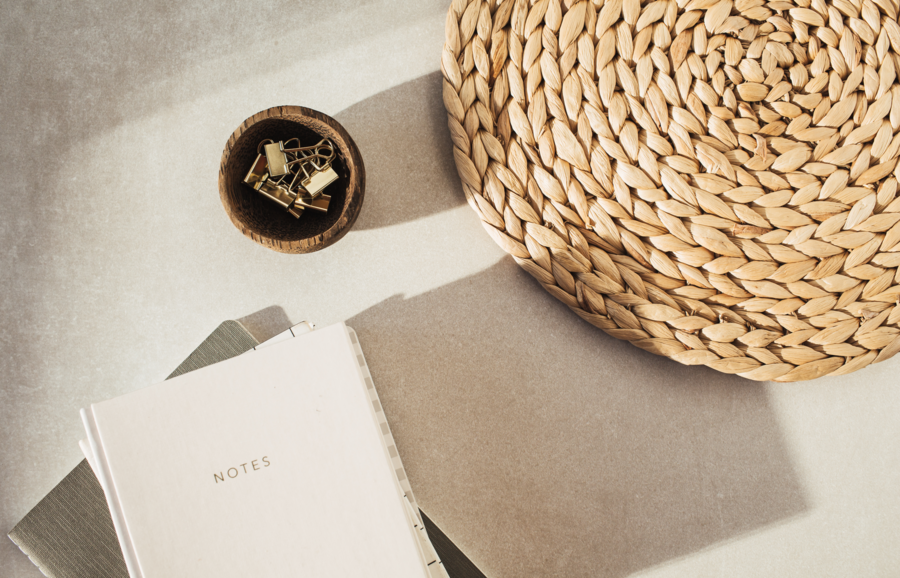
Register your Interior Design Business
Use your full name whenever possible and use a DBA (Doing Business As) for your business if your business is not your name.
I know it’s impossible to consider that you’ll need that flexibility to have multiple businesses one day or that you may re-brand / re-name your business, but please, take this advice.
This way, your insurance, your banking, your lease, etc., can all be in your name, and if you ever grow or change, that keeps paperwork much (much!) simpler.
Register for your Employer Identification Number with the IRS. Register with your local Secretary of State. Set a reminder to file your annual report.
Register for Taxes
Consult your CPA to make sure that you are registering for all the necessary State, Federal, and local taxes. If you are selling anything other than your design advice, you will need to register for Sales Tax and get set up to report and pay per your local guidelines.
Don’t put this off until you get a sale, you need to report monthly even if it’s a zero or you’ll accrue late fees and fines.
Get Business Insurance
Yes, you need business insurance. Talk to a few insurance providers. Show them your business plan and review all the details of how you will work to get the right coverage for your business.
Get Licensing, If Necessary
Check with your lawyer to see if you need any licensing to practice as an interior designer in your location.
Review Employment Guidelines
Review employment guidelines in your area to determine registration requirements, minimum wage, the signage you must post in the workplace, and if you should hire freelancers or full-time employees.

Open a Business Bank Account
Open a bank account that is separate from your personal banking. It should be in your name and your business name (if different from your name), including DBAs.
Open a Business Credit Card
Open a business credit card that is separate from your personal credit card. It should be in your name and your business name (if different from your name).
Select Software
One of the most important things for a small business owner to do is embrace technology and use it to improve efficiency. Here’s what we use, you may start small and work your way up to this.
- Interior design software – for proposals, purchase orders, invoices, tracking open orders, and taking credit card payments
- Accounting software – sometimes integrated with proposal and purchasing software, but not always
- Computer-aided design software
- Sourcing and presentation software
Open Trade Accounts
As a registered interior designer, you have access to trade pricing with vendors and trades. You can purchase at a discounted price and sell those goods and services at the retail price (that the client would have paid if they’d walked in off the street, without a designer as their buying agent).
Thus, it’s important to research and open trade accounts.
The bottom line on how to start an interior design business is that it begins with daily courage and also requires a fair bit of confidence, optimism, and strategic business practices.
Speaking of Strategic Interior Design Business Practices
The first question every potential client asks an interior designer is “how do you work?” We all know what they’re really asking is “what is this going to cost me?”
The key to signing interior design clients is being able to answer that iconic first question with utter confidence and clarity.
It requires a client-centric mindset that instills trust, a strategic pricing model that provides clarity, and streamlined systems to create a luxury experience.
Interior design projects come with big investments. If you want to play in this arena, you need to be absolutely rock solid on your pricing model. Clients need to trust you entirely, especially when it comes to their money and their home.
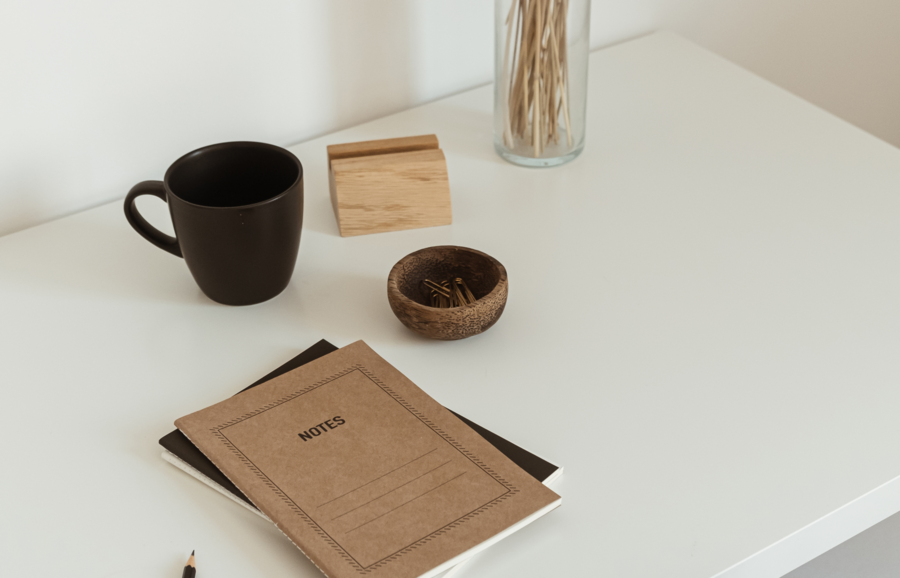
They need clarity; that means that clients need to understand your pricing model in two minutes or less. If it’s complicated or mysterious, you’ll lose their trust and their attention.
Potential clients also need to be confident that you are a professional—that you are an expert in design and in the business side of interior design. To convey this, you need to be 100% confident in how and what you charge.
I had a potential client call me after providing her with my proposal. She said, “I received a couple of quotes for my project and your pricing is five times more than the next designer’s quote.”
I knew that what I pitched was exactly what I needed to do an outstanding design, see it through professionally, pay my team appropriately, and meet my profit margin goal. I’d used this pricing model many times to land and satisfy design clients. So, I did not waiver.
But, I was sad for our industry. There’s a designer out there either charging five times less than me (gasp!) or they were so unclear on how they were charging that the client couldn’t compare the bids apples to apples (double gasp!).
My heart ached because I’ve been there. Undercharging and using complicated pricing models that were more confusing than profitable. They hurt my client relationships and my bottom line.
There’s a lack of standards on how to price interior design services, let alone how to run a profitable design firm with joy, efficiency, and confidence.
This gap propelled me to share everything I know about building an interior design firm. It’s why I wrote this post on how to start an interior design business.
More importantly, it’s why I created the Interior Design Standard and share my best business practices. I believe in abundance, and know that there is enough to go around.
Our industry improves with each individual designer who runs a more professional and profitable business—we all rise together.
Being confident in your systems, pricing, and mindset is how to start an interior design business.
A delicate balance of these three pillars will give you an unshakable start.
The first step to landing more dream projects is understanding your strengths when attracting dream clients.
Are you a Systems Goddess? Perhaps you’re the Queen of the Numbers or a Mindset Savant? Once you understand how you’re uniquely wired, you’ll feel confident playing in the high-end interior design arena. And, you’ll know where you need to improve or hire to round out these skills.
Just imagine, having more creative freedom, feeling invigorated by the work you do, and having a pipeline full of clients (with healthy budgets). This is precisely what a thriving interior design firm can do for you.
Let’s uncover your superpower. Take the FREE quiz now and learn exactly how you stand when it comes to attracting interior design clients.
I mentioned that I’d share a bit more about me and my business. Let’s get to it.
I’m Sandra Funk, founder and leader of my boutique interior design firm, House of Funk, and my digital business masterplan, the Interior Design Standard.
I’m honored to have my work recognized by numerous awards and over 30 national press outlets, including Elle Decor, Architectural Digest, and House Beautiful.
And, yes, I have an ulterior motive. I want to see our entire interior design industry rise, so I’m sharing as much as I can whenever I can.
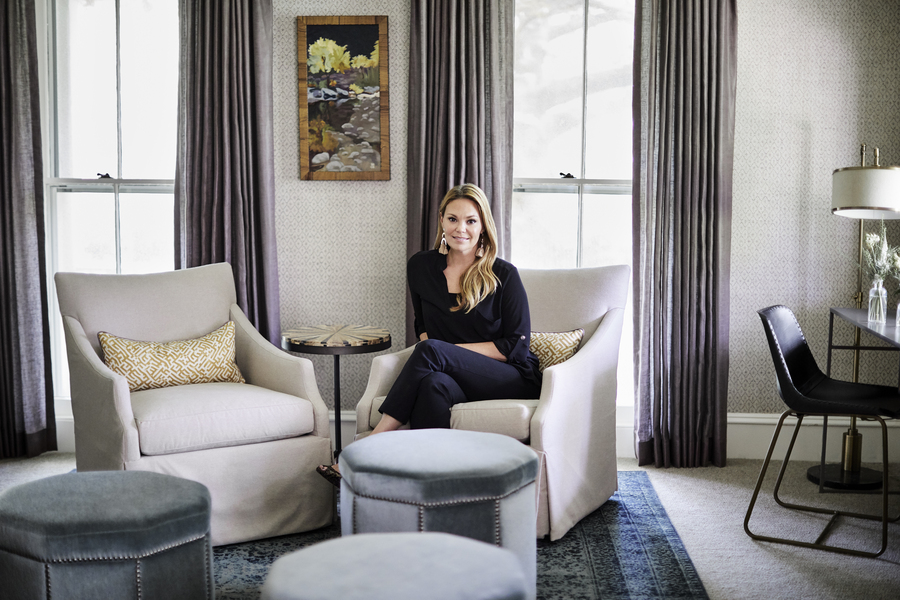
You can find me speaking about my mission to empower and educate the next generation of design entrepreneurs. With my turn-key approach, I welcome designers into my inner circle, sharing my signature model to build a 7-figure luxury design firm.
I’ve always appreciated the hard work and dedication that goes into following one’s dreams, especially when those dreams come as a surprise. My journey to interior design was completely unexpected.
I always thought that my sister and I would take over the family tire business. But one night, my father announced that he and my aunt were selling the company.
That decision turned out to be the best thing for me. It forced me to reevaluate what I was passionate about and put my life’s path into my own hands. Freeing and exciting, to say the least.
I got a finance degree from Michigan State because I knew I wanted to own a business one day, but I didn’t know what that business would be. I wanted to travel, so I worked for Accenture as a business consultant after college in NYC.
I then got involved in web usability design—all the rage in the early 2000s. I was taking design classes at The New School’s Parsons School of Design because there weren’t classes devoted to web usability yet and I just fell in love with design.
I left consulting and worked at Ethan Allen while continuing to study at Parsons. Ethan Allen was a crash course in talking to anyone, sales and furniture, window treatment and rug construction. WAY more than I bargained for, including the opportunity to design Joy Behar’s home office and debut that transformation live on The View.
From there, I went on to work at the Christopher Norman Showroom at the D&D. It was there that I was influenced by so many amazing New York designers, many of whom were the design descendants of Parish-Hadley.
In addition, Christopher Norman, all those NYC designers, and the D&D community taught me so much about high-end quality and luxury goods. Very eye-opening to this Michigan girl.
I later moved to Chicago and found amazing mentors at Fredman Design Group. Back on the east coast, I landed at the incredibly talented Sandra Oster Interiors.
The lessons I learned from all of these fierce female entrepreneurs were completely invaluable. They paved the way for me to go out on my own. But, those early years as a business owner were challenging.

It was just me in my home office. I opened the checking account with my first client retainer and went from there.
I did all the drafting, planning, sourcing, and communications myself. To get the word out, I sent holiday cards to my friends and family, telling them about my new business.
From my first design job at Ethan Allen to opening up my own interior design firm, all of my experiences have taught me what it takes to run a business.
No matter what field you’re in, creating a successful business is hard work, but so rewarding. You have to have the resolve to follow your dreams.
You’ve got this!
Tell me in the comments: Now that you have the tools to start an interior design business, what is the first step you will take towards achieving it?

Ready to attract dream clients?
Download my FREE Call Script and start filling your pipeline today:

